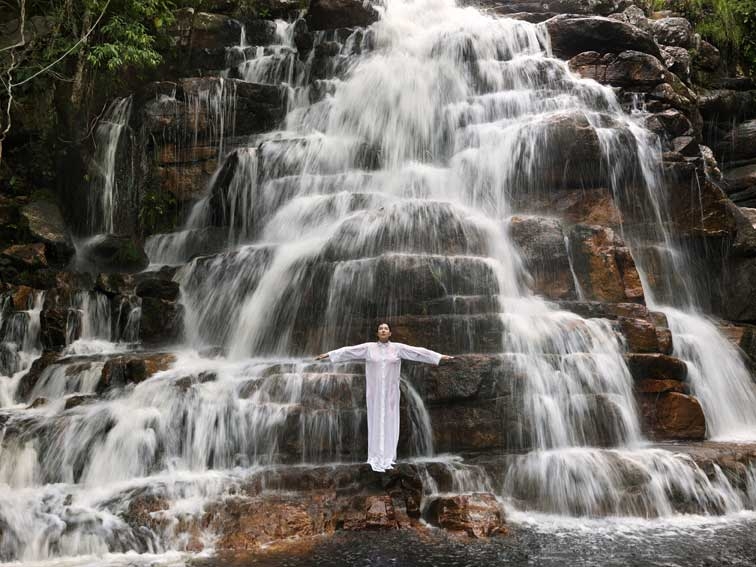On Nature, a group exhibition that aims to capture, as the press release states, ‘the ephemeral, expansive qualities of the natural world and present it within the context of the constructed gallery environment indoors’, seems bound to fail. Not least because ‘qualities’ of the ‘natural world’ being plural, the exhibition might want to ‘present them’, not ‘it’, in the gallery. But one can’t really blame Sean Kelly for the theme. A summer group show is about a gallery finding the biggest umbrella under which a wide range of artists, its own and others’, can shelter. ‘Nature’ fits the bill perfectly.
Visitors are greeted by Olafur Eliasson’s Colour Vision Kaleidoscope (2003), a glass cylinder resting on a simple wooden stand that looks like a set piece from a children’s movie about magical inventions from the nineteenth century. If you look at it from the front end, the window of the gallery is refracted back at you as a prism of rainbow-coloured fragments. Hanging above the staircase leading down to the basement theatre (where one can see Nummer negen, the day I didn’t turn with the world (2007), a beautiful but dull time-lapse video of the artist Guido Van Der Werve standing at the North Pole and turning with the sun) is Rebecca Horn’s Crickets Night Watch (2011), which consists of two brass antennas mounted on a lava stone. The piece mimics the movement of an insect waving its feelers; it’s unexpectedly sweet.
For many of the works, ‘nature’ is just what’s in the pictures. Constantin Brancusi’s photograph Endless Column (c. 1926–7) shows the artist’s signature sculpture against a cloudy sky. Darren Almond’s Fullmoon @ Farm (2003) captures a placid river coloured with a chromogenic tint (the image is so crisp that if it appeared on your Instagram feed, you’d definitely ‘like’ it). Places of Power, Waterfall (2013) shows Marina Abramovic in a white robe standing in a crucifixion pose underneath a waterfall (a reminder of why higher beings normally stay invisible).
Other works feature humans. A tiny drawing on brown paper by Joseph Beuys, Untitled (Ohne Titel) (1948), crudely renders – depending on your imagination – a man capturing a naked woman with a lasso or a couple engaging in a sex game, which may be the same thing. Antony Gormley’s Untitled (2007) offers a perfectly symmetrical man drawn on a leaf from Luzon Island, Australia. Man Rock (1982–3), also by Gormley, gives us the crude outline of a man who seems to hug the Portland limestone from which he’s carved; it calls to mind nothing so much as Earth Day.
Unsurprisingly, one doesn’t feel the force of nature in the exhibition so much as the presence of one’s own body. For example, looking into Gao Weigang’s In One Breath 2 (2013), a stainless steel wall piece, you catch your own reflection as well as that of Laurent Grasso’s 1610 (II) (2011), a constellation of neon blue stars that twinkle benignly. To get there, you have to walk around Richard Long’s Leuk Stone Circle (2000), a circular floor sculpture made of stones from the Rhône’s riverbed. The piece itself may just be a relatively uninspired bit of indoor Land art, but it keeps you moving.
This review originally appeared in the September 2013 issue.
